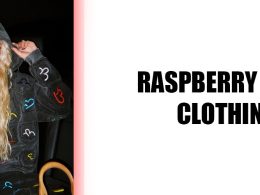Personality is a complex and multifaceted aspect of human beings. Yet, society often simplifies and categorizes individuals based on stereotypes and assumptions. It’s time to challenge these misconceptions and celebrate the diversity of personality types. From introverts to extroverts, and everything in between, each personality type brings unique strengths and perspectives to the table. In this article, we will explore the importance of embracing personality diversity and breaking free from limiting stereotypes.
1. Recognizing the spectrum of personality
Personality exists on a broad spectrum, encompassing a range of traits, tendencies, and behaviors. No single label can fully capture the richness and complexity of an individual’s personality. It’s crucial to acknowledge that everyone is unique and possesses a combination of various traits that make them who they are.
2. Understanding introversion and extroversion
Introversion and extroversion are two personality dimensions that are often misunderstood. Introverts are commonly seen as shy or anti-social, while extroverts are perceived as outgoing and attention-seeking. However, introversion and extroversion are not black-and-white categories. They represent preferences for different social and energy dynamics, with introverts drawing energy from solitude and extroverts gaining energy from social interactions. Both types have valuable contributions to make in different contexts.
3. Valuing the strengths of introverts
Introverts bring a wealth of strengths to the table. Their introspective nature allows them to think deeply, analyze situations, and come up with creative solutions. They excel at focused work, have strong attention to detail, and are excellent listeners. By recognizing and appreciating the strengths of introverts, we can create spaces that allow them to thrive and contribute their unique perspectives.
4. Appreciating the energy of extroverts
Extroverts, on the other hand, thrive in social settings and enjoy engaging with others. They are often skilled at building connections, networking, and energizing those around them. Extroverts are natural collaborators and tend to be effective communicators. Their energy and enthusiasm can inspire and motivate others, creating vibrant and dynamic environments.
5. Embracing ambiverts
Ambiverts, who fall in the middle of the introversion-extroversion spectrum, possess a combination of traits from both ends. They can adapt to different social situations and display characteristics of introversion or extroversion depending on the context. Ambiverts offer the flexibility to navigate a variety of environments and engage with diverse groups of people.
6. Challenging stereotypes
Stereotypes limit our understanding of individuals and perpetuate narrow-minded thinking. It’s time to challenge the stereotypes associated with different personality types. Introverts are not necessarily shy or lacking social skills, and extroverts are not always attention-seeking or superficial. By challenging these stereotypes, we create space for individuals to express themselves authentically, free from judgment and misconceptions.
7. Emphasizing individuality and growth
Each person’s personality is shaped by a unique combination of genetics, upbringing, and life experiences. It’s important to remember that personality is not fixed or static. Individuals can evolve, grow, and develop new traits and skills over time. Emphasizing the potential for personal growth allows us to appreciate the diverse journeys that individuals undertake as they navigate their lives.
8. Building inclusive environments
To celebrate diversity in personality types, we must create inclusive environments where all individuals feel accepted and valued. This involves embracing different communication styles, providing opportunities for both collaborative and solitary work, and fostering a culture of respect for varying preferences and strengths. Inclusive environments empower individuals to embrace their authentic selves and contribute their unique perspectives to collective endeavors.
9. Encouraging self-reflection and acceptance
Self-reflection is a powerful tool for individuals to understand their own personality traits, strengths, and areas for growth. Encouraging self-reflection promotes self-awareness, empathy, and acceptance of oneself and others. It enables individuals to recognize and appreciate the diversity of personalities around them, fostering a culture of understanding and inclusivity.
10. Celebrating the mosaic of personalities
Just as a mosaic is made up of diverse and colorful tiles, society is enriched by the mosaic of personalities. Each personality type adds a unique hue and texture to the collective human experience. By celebrating the diversity in personality types, we foster a society that values the contributions of all individuals and creates opportunities for collaboration, innovation, and growth.
In conclusion, it’s time to bite back against stereotypes and celebrate the diversity in personality types. Embracing introverts, extroverts, ambiverts, and the vast range of traits and tendencies allows us to create inclusive environments where everyone can thrive. By challenging stereotypes, emphasizing individuality, building inclusive spaces, and encouraging self-reflection, we foster a society that celebrates the mosaic of personalities and embraces the richness it brings.












